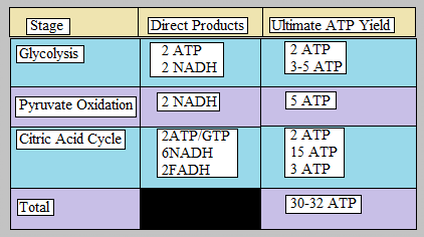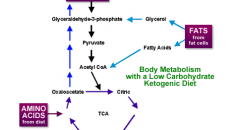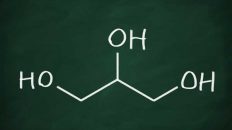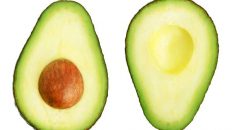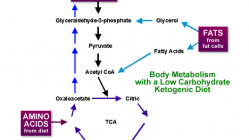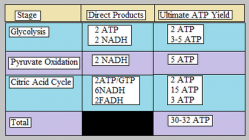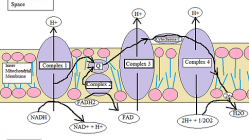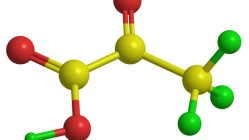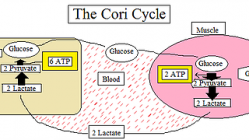In the last two posts we examined how oxidative phosphorylation works and discussed its two components in detail: The Electron Transport Chain and Chemiosmosis. Now that we understand how these processes work, we can examine how many ATP are created from oxidative phosphorylation in total.
Most sources tell us that the maximum ATP yield from a molecule of glucose is around thirty to thirty-two (30-32) ATP. We can assume this yield is correct because:
Glycolysis produces two net ATP
Citric Acid Cycle produces two net ATP (or sometimes GTP)
Oxidative phosphorylation produces the remaining twenty-six to twenty-eight (26-28) ATP
Research also tells us that four (4) hydrogen ions must flow back into the matrix via ATP Synthase to power the creation of one ATP molecule. When the electrons from NADH move through the ETC, about ten (10) hydrogen ions are pumped from the matrix to the intermembrane space- this yield about two and a half (2.5) ATP. Finally, electrons from FADH2 pump only six (6) hydrogen ions producing one and a half (1.5) ATP.
Some of these numbers are exact due to the difficulty in trying to observe these processes; most cellular functions are theories. One example is the ATP yield from NADH created in glycolysis. Because glycolysis happens in the cytosol, NADH cannot cross the inner mitochondrial membrane to deliver its electrons to Complex 1. Rather, these electrons are handed off to a molecular shuttle system that delivers them through a series of steps to the ETC.
*Some cells in mammals have a shuttle system that delivers electrons to the ETC from FADH2 where only three (3) ATP and produced for the 2 NADH of glycolysis. Other cells in mammals have shuttle systems that deliver the electrons from NADH which yields five (5) ATP.
*In bacteria, both glycolysis and the citric acid cycle happen in cytosol- this means no shuttle is needed and 5 ATP are created.
Summary of ATP Yield:
The breakdown of one glucose molecule may be an overestimated amount since intermediates from cellular respiration may be drawn off by the cell and used in other biosynthetic pathways; this would reduce the number of estimated ATP produced. In conclusion, cellular respiration only the beginning for many different metabolic pathways in the cell which form a network that is larger than the glucose breakdown pathway we discussed.
